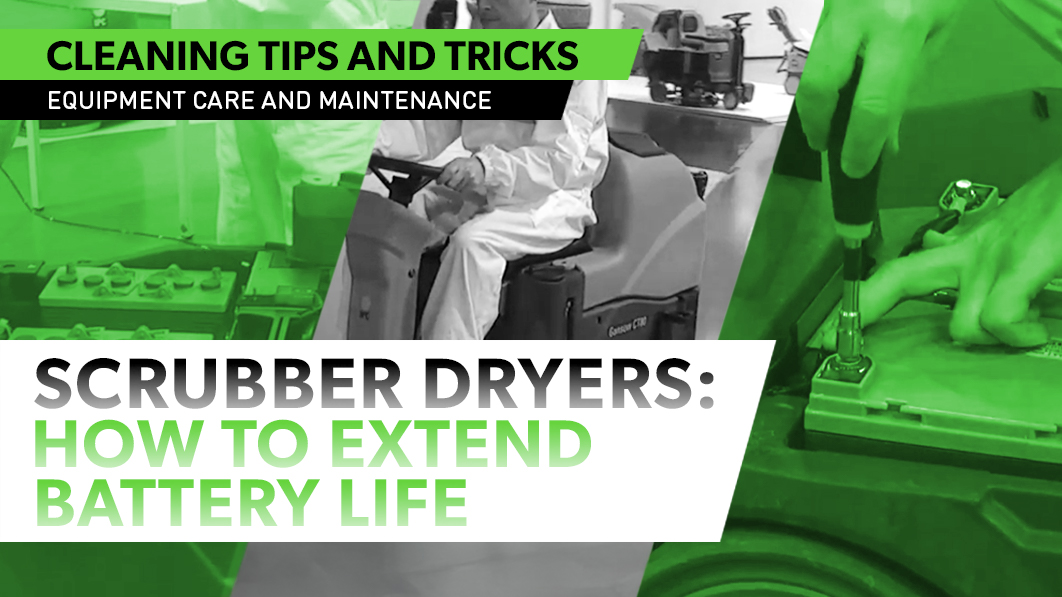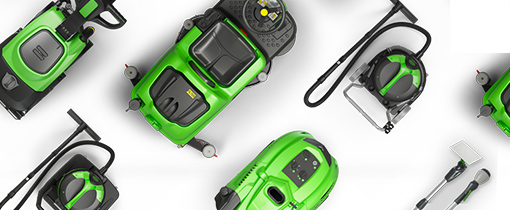
The batteries in your floor scrubber are a critical investment in the successful operation and longevity of your floor-cleaning machines. By following the manufacturer’s recommendations regarding charging, discharging, cleaning, temperature control, and other maintenance procedures, your cleaning team can extend the lifespan of these batteries. This will not only help keep your facilities spotlessly clean but also reduce equipment downtime, lower maintenance costs, and improve overall efficiency.
TYPES OF FLOOR SCRUBBER BATTERIES AND THEIR MAINTENANCE NEEDS
Depending on the model of your scrubber dryer, you might have one of four different types of batteries. The battery maintenance requirements for scrubber dryers depend on the type of batteries your machines are equipped with:
1. Maintenance of Lead-Acid Batteries
Lead-acid batteries are commonly used in scrubber dryers and are cost-effective with a long lifecycle. However, they require regular maintenance and pose the risk of acid leaks if not properly maintained. Their lifespan can also significantly decrease if allowed to discharge completely. It’s essential to follow the manufacturer’s guidelines for checking the electrolyte levels, and you should add distilled water when necessary. The goal is to completely cover the battery cells with the electrolyte solution without overfilling to prevent spills. Always perform this task before charging the batteries.
2. Maintenance of AGM (Absorbent Glass Mat) Batteries
Absorbent Glass Mat (AGM) batteries are sealed, making them easier to maintain. They require minimal upkeep, such as sticking to a consistent charging schedule and ensuring the connections remain clean and free of debris. Unlike lead-acid batteries, there’s no need to refill or balance the electrolyte fluid regularly, saving time and reducing potential risks. While these batteries are cost-effective and perform well in low temperatures, their lifespan may be shorter compared to traditional lead-acid batteries.
3. Maintenance for TPPL (Thin Plate Pure Lead) Batteries
Thin Plate Pure Lead (TPPL) batteries offer an extended lifespan, faster recharging, and higher efficiency compared to other battery types. Operators can prolong battery life by keeping terminals clean and routinely checking the wires and housing for cracks or debris. These simple steps help TPPL batteries last, even in cases of deep discharges, making them a good option for heavy-duty floor-cleaning machines.
4. Maintenance of Lithium-Ion Batteries
Lithium-ion batteries are the next generation of power sources for professional floor-cleaning equipment. They charge quickly, require minimal maintenance, have a long lifespan, and feature a low self-discharge rate, allowing for longer cleaning operations between charges. However, they are sensitive to temperature, so it’s important to monitor their environment. Despite their longevity, proper disposal protocols must be followed when the batteries are no longer in use.
GENERAL TIPS FOR BATTERY MAINTENANCE IN SCRUBBER DRYERS
To extend the life of all floor scrubber batteries, operators should follow some basic daily maintenance practices:
- Charging best practices
- Always adhere to the manufacturer’s guidelines for charging the battery in your scrubber dryer.
- Avoid incomplete charge cycles and recharge the battery when fully discharged; partial or incomplete charges are harmful in the long term and can significantly reduce the overall life of the battery.
- Additionally, only use the correct charger designed for the battery type. To avoid partial charges or deep discharges, create a charging schedule that ensures batteries stay within their optimal charge range based on the manufacturer’s recommendations.
- Battery connection inspections
- Regularly inspect the battery terminals and connection points on your scrubber dryers to ensure they are clean and free of debris.
- Check that the connections are properly tightened without over-tightening them. Over-tightening can break the terminals, while under-tightening can lead to poor connections and shorten battery life.
- Look for any cracks or corrosion that could prevent efficient charge and discharge cycles, which would compromise the battery’s performance and reduce its lifespan. Manufacturer guidelines will provide the correct torque values to avoid under or over-tightening the connections.
- Avoiding prolonged downtime
- To avoid unnecessary downtime, plan and schedule charging cycles during periods of inactivity.
- This ensures that your floor-cleaning machines are properly charged and ready for use when needed. This proactive approach not only extends the life of the batteries but also guarantees optimal performance and efficiency of your scrubber dryer.
EXTEND BATTERY LIFE FLOOR CLEANING MACHINES
Taking proper care of the batteries in your floor-cleaning machines will help you achieve optimal performance for the longest period of time, improving operational efficiency and reducing replacement costs.
By following the manufacturer’s recommended maintenance procedures for scrubber dryer batteries, you can significantly extend battery life and minimize downtime.
For expert advice on battery care and maintenance for scrubbers and other professional cleaning equipment, contact us.
